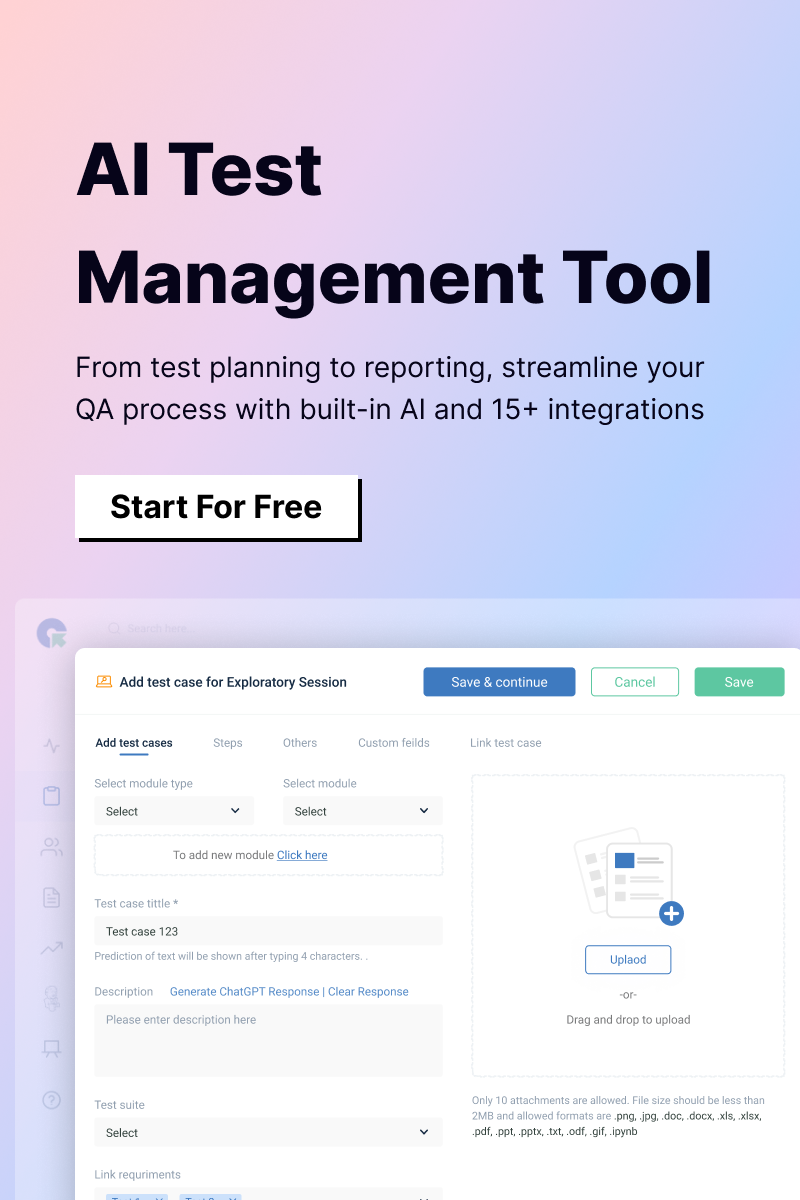Anyone familiar with the software development sector might know the significance of the Node.JS Automation Testing framework in JavaScript. It is one of the most widely used frameworks today used by millions of developers to develop countless applications.
Node.JS development services powered by JavaScript, have been used to create high-performing business apps like Amazon and LinkedIn. The prominent Nodejs frameworks have a seamless and easy-to-use testing environment while it is being used widely.
A methodical strategy for automating test cases and preparing them for hassle-free execution of any application is essential for automation testing. A set of established best practices should be followed for the best outcomes.
But what are they? Let’s take a look!
10 Best Practices for Automation Testing Node JS:
Your application stability determines through testing, and if necessary, you can make it more stable to prevent a mistaken commit that might bring the entire piece of software to a halt. Before releasing your code to your users, testing is necessary to ensure that no one will experience any application bugs.
To create reliable online applications, developers should adhere to the following best practices for automated testing with NodeJS:
Using Small & Solitary Test Cases
In Node.js, test cases are typically kept short and to the point for better test outcomes. Each test case and its test data will be different from the others without any interaction, as is the case with optimal Node.js practices. It makes it possible to test failures without affecting others and to deliver more specific findings. Additionally, it would significantly aid in enhancing test performance.
Making tests Isolated and Atomic
Tests should be isolated and atomic. Each test should function autonomously, independently of the others. If neither test depends on others, then it will not change if one test fails. Additionally, the tests must adhere to the atomicity property. It shouldn’t abruptly end in the middle. A test must be seamlessly entered and departed with a pass or fail outcome.
Additionally, imagine that each test should have its own set of data to run tests on. Multiple tests using the same global data defeat the purpose of using tests on the application. Your performance will improve as your time grows, but it is not worthwhile. Don’t forget to keep your data test-specific.
Test Case Nomenclature
When developing test cases, a relevant name is vital. Writing successful test cases requires that the name should convey the case’s aim by being convenient for all stakeholders to understand. Never give a test a name picked at random. For example, consider checkCountryLanguage() or validateUserPhoneNumber().
A good test case name should convey the following:
- Feature under test.
- The particular scenario is being executed.
- The expected test outcome.
Using BDD Style
One of the widely acknowledged Node.js best practices is to create tests conductively to meet product expectations. This declarative language approach prevents non-technical stakeholders from seeing the actual coding by allowing users to comprehend the test flow.
Due to its simplicity and ability to seamlessly interact with Node.js, BDD (Behavior Driven Development) is regarded as the best example of this approach.
Implementing Assertions
Any test case assertions are a crucial component. We can determine if a test case is performing as expected without looking at these stated assertions, which may or may not be true, and provide a Boolean outcome. Node.js automated testing heavily relies on assertions, which are encouraged to use in a self-explanatory way to minimize programming effort and produce reliable results.
Assertions are helpful because they save the developer’s time from reviewing the whole output and reply to each step by comparing the expected results with the actual results and indicating whether the assessment is passed/failed. These models are seamless to incorporate and human-readable because of a Node’s Chai library assistance.
A good assert example is: expect(todayWeather).to.be.(clear);
Using Minimal Test Case Helpers & Abstractions
A robust test case code has few external interactions and is well-factored. It has the least usefulness, hooks, or external consequences and is a complete entity in and of itself. A new developer or tester shouldn’t have to go on to another test to comprehend the prior one, nor should they have to walk through the entire sequence of test cases. Reducing them is seen as a crucial Node.js best practice since it turns the criteria simpler, easier to comprehend, and maintain.
Using Test Runners
A test runner, often known as a library or tool, executes tests on a source code directory that includes several unit tests. It provides the user with legible log files or console logs that includes the test findings. Although there are several test runners on the market, Mocha is the one that works the best with Node.js.
The open-source test runner Mocha offers a method for test runs that is programmatic, simple to deploy and produces good results. It is convenient when dealing with databases to feed values to test cases, which can be fake or real depending on what is needed, and it addresses the drawbacks of most Node.js test runners.
Making Crisp Test Coverage
Good test coverage is crucial for any software code to operate correctly. It provides a measurement of how much of a test is covered by a specific test. As a result, it is regarded as one of the most crucial factors when preparing for a test. When developing test cases that ensure excellent coverage, it is essential to keep the following things in mind to adhere to Node.JS best practices:
- The software application nature.
- The test coverage should only cover the vital aspects to guarantee cost-effectiveness.
- Developers should aim for 100% test coverage for a highly interactive app.
- The test runners and test coverage should work together seamlessly.
Using Lint
A linter/lint is a tool used to test the entire code and raise warning flags for any programming errors or defects, code stylistic problems, or other questionable structures. Using linters to find structural issues in the code that would otherwise go undetected on the logical side is strongly advised while working with Node.js.
These flaws can include formatting mistakes, undeclared variable assignments, or the usage of undefined variables. By addressing all of them, the code will look clean and simple to understand and read. One such tool that can be connected with Node.js and used to adhere to such Node.js automation tips is ESLint.
Providing Logical Inputs
For automated test cases, it is usually best to choose realistic and practical inputs that are near to real-world situations and might arise during actual application usage. Faker Library is one such library that works well with Node.js and creates such real-time inputs. It offers a huge collection of data that you can use to get better outcomes.
Conclusion:
Working with Node.js could seem difficult and intimidating at first. However, after you get through that early phase, using Node.js will be the best decision you have ever made. With the help of these top Node.js practices for automated testing, you can gain the self-assurance to use Node.js and grow to like it. If in doubt, you can always hire node is developers and use QA Touch free test case management tool.










